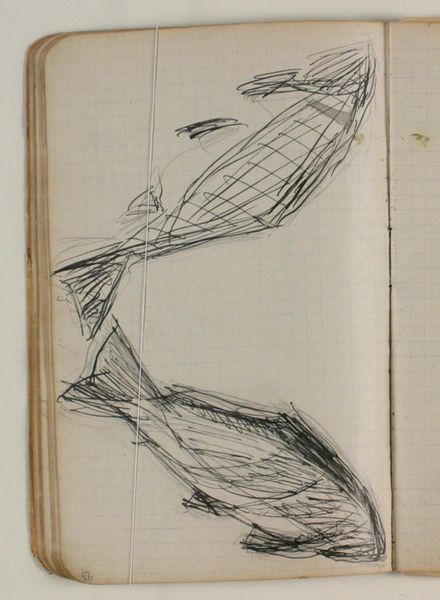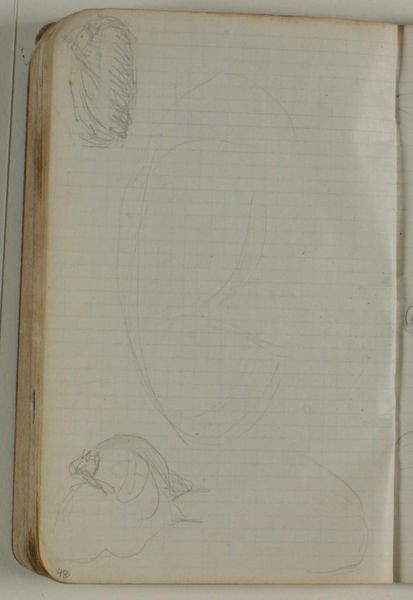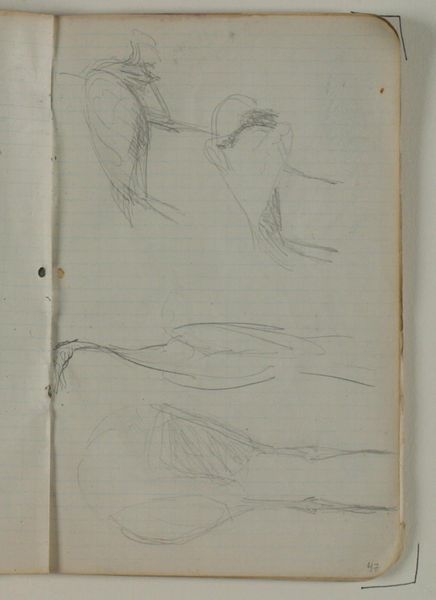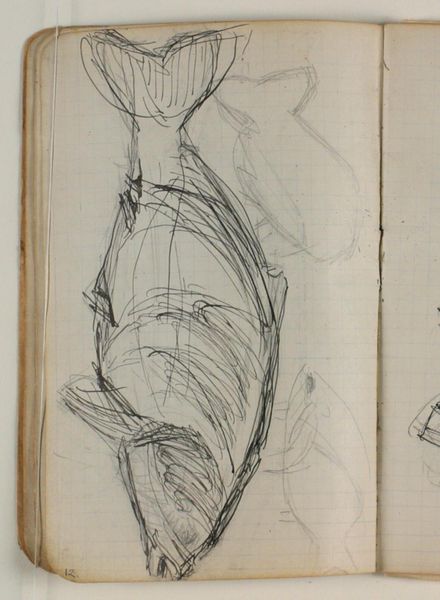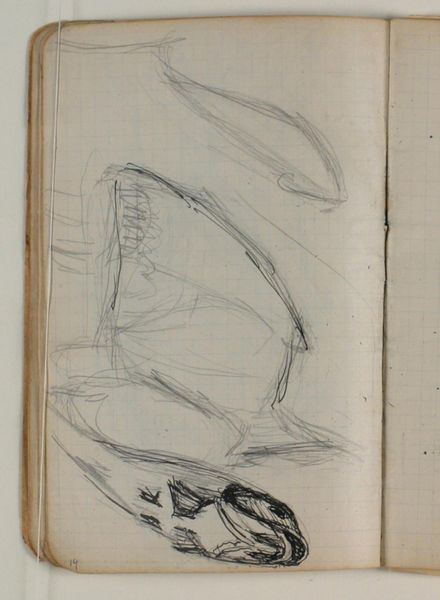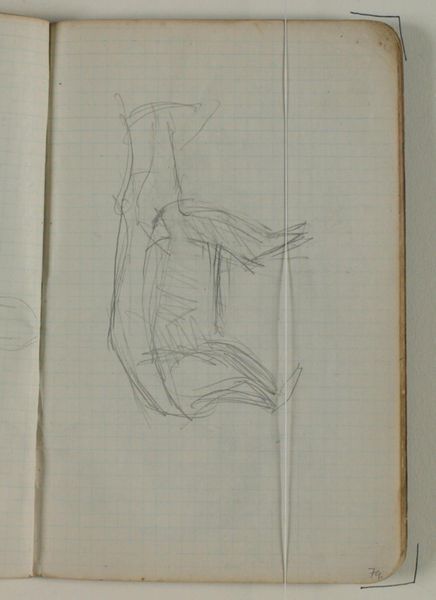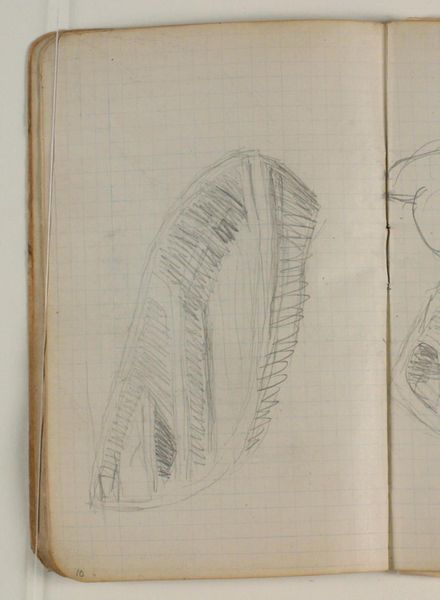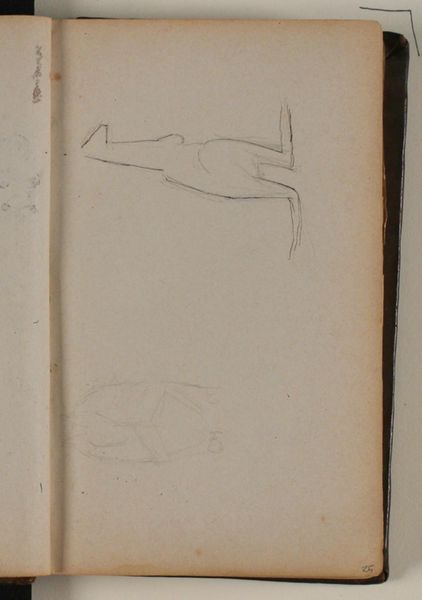
drawing, paper, pencil, graphite
#
drawing
#
organic
#
pencil sketch
#
figuration
#
paper
#
pencil
#
graphite
#
sketchbook drawing
#
realism
Dimensions: 169 mm (height) x 109 mm (width) x 5 mm (depth) (monteringsmaal), 169 mm (height) x 109 mm (width) (bladmaal)
Curator: Today, we're looking at "Sketch of a Fish" by Niels Larsen Stevns, likely created between 1905 and 1907. It's a graphite and pencil drawing on paper, held here at the SMK. Editor: It's deceptively simple. A quick gesture of a fish, rendered with such delicate lines. It feels almost… fragile. Makes you think about the fleeting nature of things, doesn’t it? Curator: It does indeed. And if we think about it through a socio-political lens, representations of nature, even seemingly benign sketches like this, are never truly neutral. Stevns, like many artists of his time, was engaging with ideas around national identity and the “natural” landscape. These artistic choices played a role in constructing and reinforcing certain cultural values and perhaps also hierarchies within society. Editor: Right. You make me consider who the work was intended for. Like, was Stevns consciously thinking about nationhood, or was he just trying to capture the slippery gleam of a fish he saw? There's an immediate intimacy in it. It feels like catching a private thought. Curator: Absolutely. But artistic intentions are always embedded within the broader structures of power. We should ask: in what ways does the representation of this seemingly mundane "fish," perhaps unknowingly, reproduce or challenge prevailing discourses of that era, maybe concerning ideas around labour, migration, or our relation to the sea? Editor: Okay, heavy! Though I agree, what isn’t tangled in context? And how we choose to read it is where things get spicy. Looking closer, the fish is slightly upturned... is it leaping, or something else? Curator: Precisely! These visual cues, in dialogue with the historical context, create layers of interpretation. Stevns' sketch exists at the intersection of art history, naturalism, and possibly nationalistic projects in early 20th century Denmark. Editor: A fish story that asks more questions than it answers, perfect. Curator: Yes. It reminds us that art is a process of engagement, a continuous exploration, an opportunity to re-evaluate inherited systems of representation. Editor: Couldn’t have said it better myself. And now, off to contemplate the cultural implications of my lunchtime herring sandwich!
Comments
No comments
Be the first to comment and join the conversation on the ultimate creative platform.
